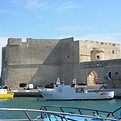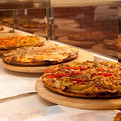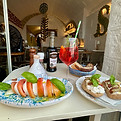
Puglia
Where Italy's heel meets sapphire seas, Puglia enchants with its sun-bleached simplicity and timeless charm. Ancient olive groves stretch toward the horizon, their gnarled trunks telling stories of centuries past, while cone-roofed trulli dot the landscape like scattered pearls. Here, whitewashed towns tumble toward crystal-clear waters, pasta ladies still shape orecchiette in medieval streets, and Baroque treasures gleam golden in Lecce's hidden squares.
The Heel of Italy's Boot
Puglia, located in the "heel" of Italy's boot, is a captivating region known for its distinctive landscape and authentic Italian charm. The area boasts hundreds of kilometers of Mediterranean coastline with crystal-clear waters and pristine beaches alongside dramatic cliffs and hidden coves.
Puglia's strategic location made it a coveted Mediterranean prize, settled first by ancient peoples including Greeks who established thriving colonies around 700 BC. The Romans incorporated the region as a gateway to the East, developing vital port cities and infrastructure that would define Puglia for centuries. Following Rome's collapse, a succession of powers including Byzantines, Normans, and the Holy Roman Empire ruled Puglia, each leaving architectural and cultural imprints still visible today. Frederick II, the "Wonder of the World," dramatically transformed the region in the 13th century, building magnificent castles and fortifications that remain iconic landmarks. After centuries under Spanish and Bourbon rule, Puglia joined unified Italy in 1861, eventually evolving from a feudal agricultural society into a vibrant destination celebrated for its distinctive heritage.
Architecturally unique, Puglia is famous for its conical-roofed trulli houses in Alberobello, Baroque splendor in Lecce (often called "The Florence of the South"), and whitewashed hill towns that reflect both Italian and Greek influences. The countryside is characterized by ancient olive groves with trees that can be over 2,000 years old, producing some of Italy's finest olive oil. Pugliese cuisine is celebrated for its simplicity and high-quality ingredients. Local specialties include orecchiette pasta (often served with turnip greens or broccoli rabe), burrata cheese from Andria, seafood straight from the Adriatic and Ionian seas, and rustic dishes featuring seasonal vegetables. The region also produces excellent wines like Primitivo and Negroamaro.
Puglia is accessible via international airports in Bari and Brindisi, which offer connections to major European cities and domestic flights from Rome and Milan. The region is well-connected to the rest of Italy by high-speed trains, though service becomes less frequent when traveling between smaller towns within Puglia itself. Renting a car is essential for exploring Puglia's countryside, coastal routes, and hilltop towns, as public transportation between rural attractions can be limited or time-consuming. For coastal exploration, seasonal ferry services connect major ports like Bari to other Italian cities and neighboring countries across the Adriatic Sea.
Despite its natural beauty and cultural richness, Puglia remains less crowded than other Italian destinations, offering visitors an authentic experience of traditional Italian life, where local festivals, crafts, and customs continue to thrive amid a slower-paced lifestyle.
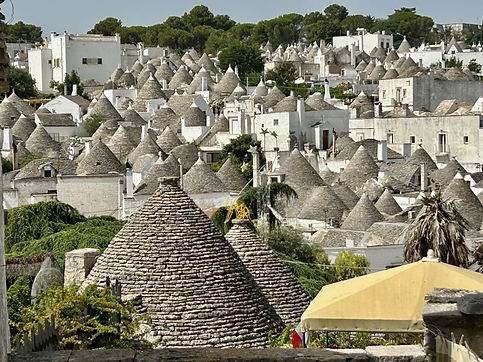
Alberobello
Alberobello is a UNESCO World Heritage site and is renowned for its extraordinary concentration of trulli—distinctive limestone dwellings with conical roofs that resemble fairytale homes. These unique structures date back to the 14th century when local rulers, seeking to avoid property taxes imposed by the Kingdom of Naples, ordered peasants to build houses without mortar so they could be quickly dismantled before tax inspectors arrived. The trulli's ingenious dry-stone construction features thick walls for natural climate control, while their conical roofs often display mystical or religious symbols painted in white lime. Rione Monti, the larger and more commercial district, stretches across a hillside with approximately 1,000 trulli that now primarily house souvenir shops, restaurants, and accommodations catering to the steady flow of tourists. In contrast, Rione Aia Piccola offers a more authentic glimpse into trulli life with about 400 structures, many still serving as private residences where locals maintain traditional ways of living, creating a quieter, more intimate atmosphere away from the commercial bustle. If driving, click here for a good parking spot.
Alberobello: Things To Do
Get lost wandering through the enchanting streets of both Rione Monti and Rione Aia Piccola districts, admiring the extraordinary trulli architecture up close and stepping inside several that have been converted into museums, shops, or cultural spaces that demonstrate traditional life. Look out for signs at shops and restaurants saying “terrazza panoramica” or “vista panoramica da fotografare,” where upstairs are charming rooftop terraces to take in the views. But note, to be invited onto the terrace, you have to purchase something in the shop. I've listed some highlights worth checking out when visiting, but the best activity is strolling through districts and discovering the beauty of this charming village.
Click here to purchase the Puglia Google map with the above recommendations included.
Alberobello: Where To Eat
Alberobello offers a delightful array of dining options ranging from family-run trattorias housed in converted trulli to rustic farmhouses serving traditional Puglian cuisine made with locally-sourced ingredients. Visitors can savor regional specialties including orecchiette pasta with turnip greens, fava bean purée with wild chicory, fresh burrata cheese, and slow-cooked meat dishes like bombette (stuffed pork rolls), often accompanied by robust local wines such as Primitivo or Negroamaro. Beyond traditional restaurants, the town also features charming cafés serving authentic Italian coffee and pastries, artisanal gelato shops, and specialty food stores where travelers can purchase high-quality olive oils, wines, and regional products to take home as edible souvenirs.
Click here to purchase the Puglia Google map with the above recommendations included.

Bari
Bari, the capital of Puglia, stands as a compelling blend of historic charm and Mediterranean energy, anchored by its bustling port that has connected Italy to the Balkans and beyond for centuries. The city's heart lies in Bari Vecchia (Old Bari), a medieval maze of narrow streets where everyday Italian life unfolds alongside impressive landmarks like the 11th-century Basilica di San Nicola, which houses the relics of St. Nicholas and attracts pilgrims from around the world. Beyond the old town, modern Bari offers elegant shopping boulevards, vibrant piazzas, and a spectacular seafront promenade where locals gather for the traditional evening passeggiata. The city's cuisine reflects its maritime heritage, featuring outstanding seafood, distinctive focaccia barese, and the opportunity to watch local women crafting traditional orecchiette pasta on the streets just as generations before them have done.
Bari: Things To Do
Explore Bari Vecchia, the atmospheric old town, where you can wander through labyrinthine streets, visit the magnificent Basilica di San Nicola, and watch local women make orecchiette pasta by hand on their doorsteps. Stroll along the elegant Lungomare promenade with its sweeping Adriatic views before discovering the vibrant shopping districts of the modern city center, including the upscale boutiques of Via Sparano.
Click here to purchase the Puglia Google map with the above recommendations included.
Bari: Where To Eat
Bari's culinary scene brilliantly showcases Puglia's farm-to-table philosophy with seafood-focused trattorias along the port, traditional osterias tucked into the old town's alleyways, and modern restaurants reimagining local classics. The city is famous for its street food traditions, including crispy focaccia barese topped with cherry tomatoes and olives, panzerotti (fried dough pockets filled with mozzarella and tomato), and sgagliozze (fried polenta squares) that can be enjoyed while exploring the historic center. Authentic Barese cuisine features signature dishes like orecchiette alle cime di rapa (ear-shaped pasta with turnip tops), tiella barese (a layered rice, potato and mussel dish), and fresh raw seafood drizzled with local olive oil, all best enjoyed with Puglia's robust red wines or crisp whites from nearby vineyards.
Click here to purchase the Puglia Google map with the above recommendations included.

Locorotondo
Locorotondo, whose name aptly translates to "round place," is a stunning whitewashed town perched atop a hill in Puglia's enchanting Valle d'Itria. This perfectly circular medieval village is renowned for its meticulously maintained historic center with pristine white buildings, winding alleyways, and distinctive pointed roof houses called "cummerse" that set it apart architecturally from other towns in the region. Recognized as one of Italy's most beautiful villages (Borghi più belli d'Italia), Locorotondo offers breathtaking panoramic views across the valley's patchwork of vineyards, olive groves, and trulli-dotted countryside from its strategic elevated position. The town is celebrated for its exceptional white wines, particularly the crisp DOC Locorotondo whites made from local Verdeca and Bianco d'Alessano grapes that perfectly complement the region's cuisine.
Locorotondo: Things To Do
Wander through the pristine circular historic center with its labyrinth of narrow whitewashed alleys adorned with flowerpots, stopping to admire the unique "cummerse" pointed-roof houses and baroque architecture of the Chiesa Madre. Take time to enjoy panoramic views of the Valle d'Itria's patchwork landscape from several scenic viewpoints along the town's edge, perhaps with a glass of local white wine from one of the charming cafés overlooking the countryside.
Click here to purchase the Puglia Google map with the above recommendations included.
Locorotondo: Where To Eat and Drink
Locorotondo offers an authentic taste of Puglian cuisine through its collection of family-run trattorias, rustic osterias, and elegant restaurants nestled within the whitewashed lanes of the historic center and along its scenic perimeter. Local specialties highlight the bounty of the Valle d'Itria, including handmade orecchiette pasta with turnip tops, slow-cooked meats like bombette (stuffed pork rolls), freshly pressed olive oil, and seasonal vegetables prepared according to traditional recipes passed down through generations. The town's dining experience is perfectly complemented by its celebrated DOC white wines—crisp, mineral-rich Locorotondo and Verdeca varieties that pair beautifully with the region's dishes—best enjoyed on panoramic terraces overlooking the rolling countryside.
Click here to purchase the Puglia Google map with the above recommendations included.

Martina Franca
Martina Franca crowns a hillside in the Valle d'Itria, distinguished by its impressive Baroque architecture and elegant white-washed old quarter surrounded by ancient defensive walls. Founded in the 10th century and later granted tax exemptions (franchigie) by Philip of Anjou in the 14th century—hence the "Franca" in its name—the town developed into a prosperous center known for its artistic heritage and architectural splendor. The historic center unfolds through a maze of narrow alleys, ornate churches, and stately palazzi adorned with intricate ironwork balconies, elaborate doorways, and sculptural facades created by skilled local craftsmen. Beyond its architectural beauty, Martina Franca is renowned for its culinary traditions, particularly the capocollo (a prized cured meat) and its summer Valle d'Itria Festival that brings world-class opera and classical music performances to historic venues throughout the town. If driving, click here for a good parking spot.
Martina Franca: Things To Do
Wander through the stunning Baroque centro storico, where ornate palaces, churches, and piazzas reveal the town's prosperity and artistic heritage, particularly the elaborate Basilica di San Martino and the grand Palazzo Ducale. Explore the labyrinth of narrow whitewashed streets lined with elegant balconies and ornate doorways, stopping at Piazza Maria Immacolata and Piazza XX Settembre for people-watching and aperitivo.

Explore the Piazzas
Martina Franca's interconnected piazzas form the social heart of the town, each with its own distinct character and surrounded by Baroque and Rococo buildings that showcase the town's architectural splendor. Piazza Roma features the imposing Palazzo Ducale, while Piazza XX Settembre, Piazza Plebiscito, and Piazza Maria Immacolata offer charming cafés with outdoor seating perfect for people-watching and experiencing the authentic rhythm of daily life.
Click here to purchase the Puglia Google map with the above recommendations included.
Martina Franca: Where To Eat
Martina Franca offers a delightful culinary scene anchored by its most famous specialty, capocollo (a delicate cured meat made from pork neck), which has earned Protected Geographical Indication status and features prominently on local antipasti platters. The town's restaurants range from traditional trattorias tucked into the narrow lanes of the historic center to elegant dining establishments in converted palazzi, all showcasing authentic Puglian cuisine including handmade orecchiette pasta, slow-cooked meat dishes like bombette (stuffed pork rolls), and fresh seasonal vegetables prepared according to time-honored recipes. The dining experience is enhanced by the Valle d'Itria's excellent wines, particularly the crisp whites from nearby Locorotondo and robust reds from the surrounding countryside, best enjoyed on terraces overlooking the Baroque rooftops or in atmospheric dining rooms within centuries-old buildings.
Click here to purchase the Puglia Google map with the above recommendations included.

Monopoli
Monopoli enchants visitors with its spectacular position on the Adriatic coast, where a fortified medieval old town of whitewashed buildings meets crystal-clear turquoise waters. The town's rich maritime heritage is evident in its picturesque porto vecchio (old port), where traditional wooden fishing boats called gozzi bob alongside the ancient sea walls, and in the imposing 16th-century Castle of Charles V built to defend against Ottoman invasions. Beyond the historic center with its maze of narrow streets, elegant churches, and vibrant piazzas, Monopoli boasts a stunning coastline dotted with small sandy coves and rocky beaches that extend both north and south of the town. The surrounding countryside showcases the agricultural wealth of the region with ancient olive groves, many containing trees over a thousand years old, alongside fertile fields that produce the exceptional ingredients featured in Monopoli's seafood-focused cuisine. Despite its considerable charm and beauty, Monopoli remains relatively undiscovered by mass tourism compared to better-known coastal towns in southern Italy, allowing visitors to experience authentic Puglian coastal life throughout its atmospheric streets and sun-drenched shores. If driving, click here for a good parking spot.
Monopoli: Things To Do
Explore Monopoli's atmospheric centro storico with its maze of narrow whitewashed streets leading to impressive churches, lively piazzas, and the imposing Charles V Castle, making sure to wander along the ancient sea walls for spectacular Adriatic views. Relax at one of the town's many beautiful beaches and coves, from the small sandy Porto Rosso to the rocky shores of Cala Porta Vecchia, where crystalline waters provide perfect swimming and snorkeling opportunities just steps from the historic center. Complete your Monopoli experience by sampling fresh seafood at harborside restaurants, watching the colorful fishing boats return with their daily catch, and taking in the authentic local atmosphere during the evening passeggiata along the lungomare promenade.

Walk along the Lungomare Santa Maria and Porto Antico
The scenic Lungomare Santa Maria offers a stunning promenade along Monopoli's seafront, where the crystal-clear Adriatic waters crash against ancient fortifications and fishing boats bob in the harbor. The Porto Antico (old port) reveals the town's maritime soul with its colorful wooden fishing boats called gozzi, weathered stone quays, and fishermen mending nets against a backdrop of whitewashed buildings that seem to rise directly from the sea.

Faro Rosso Monopoli and Bastione Santa Maria
The distinctive red lighthouse (Faro Rosso) stands as a charming sentinel at the harbor entrance, offering spectacular photo opportunities and panoramic views across the Adriatic horizon (especially at sunset). Nearby, the massive 16th-century Bastione Santa Maria forms part of the town's original defensive system, its robust stone walls and lookout points providing both historical significance and breathtaking vistas of the coastline and harbor.

Explore the Centro Storico
Monopoli's enchanting centro storico unfolds as a labyrinth of narrow whitewashed streets, hidden courtyards, and surprising piazzas dotted with Baroque churches and historic buildings that reflect centuries of diverse cultural influences. Piazza Giuseppe Garibaldi serves as the town's elegant heart with its outdoor cafés and impressive Palazzo Palmieri nearby, whose grand façade and ornate balconies exemplify the architectural splendor of Monopoli's noble past.

Relax at a Local Beach
Monopoli's coastline offers a succession of idyllic beaches and coves, from the small urban Cala Porta Vecchia tucked beside ancient walls to the more spacious natural settings of Porto Rosso and Porto Bianco with their golden sands. Each beach provides its own unique charm and crystal-clear turquoise waters, allowing visitors to choose between easily accessible urban swimming spots and more secluded natural settings just a short distance from the town center.
Click here to purchase the Puglia Google map with the above recommendations included.
Monopoli: Where To Eat And Drink
Monopoli's dining scene beautifully showcases its dual identity as both a fishing town and agricultural center, with seafood-focused trattorias along the harbor serving the freshest catch alongside rustic osterias in the centro storico offering farm-to-table Puglian specialties. Local cuisine features outstanding crudo di mare (raw seafood) dressed simply with local olive oil and lemon, seafood pasta dishes like spaghetti ai ricci (sea urchin pasta), and traditional recipes utilizing produce from the surrounding countryside, including fava beans, wild chicory, and seasonal vegetables prepared according to time-honored techniques.
Click here to purchase the Puglia Google map with the above recommendations included.

Ostuni
Ostuni rises dramatically from the rolling olive groves of the Valle d'Itria, its dazzling whitewashed buildings cascading down a hilltop to create one of Puglia's most distinctive and photogenic cityscapes. The labyrinthine medieval centro storico forms a brilliant white maze of narrow winding streets, steep staircases, hidden courtyards, and charming arches that reveal sudden breathtaking views across the surrounding countryside to the Adriatic Sea just 8 kilometers away. At the summit stands the magnificent 15th-century Cathedral with its impressive Gothic-Romanesque façade and large rose window that dominates the town's skyline and main piazza. Ostuni's strategic hilltop position made it an important defensive settlement throughout history, with various civilizations including the Messapians, Romans, Byzantines, and Aragonese contributing to its rich cultural heritage and architectural character. Beyond its historical center, Ostuni is surrounded by ancient olive groves containing trees over a thousand years old, while its nearby coastline features some of Puglia's most beautiful beaches with crystal-clear waters and pristine natural settings.
Ostuni: Things To Do
Wander through Ostuni's enchanting centro storico, where a labyrinth of gleaming white alleyways winds past ornate doorways, flowering balconies, and Medieval architecture, culminating at the majestic 15th-century Cathedral with its stunning rose window and panoramic views. Take time to explore the town's lively piazzas, where you can enjoy a refreshing aperitivo while watching the world go by beneath the Mediterranean sun. Complete your Ostuni experience with a drive through the surrounding countryside of ancient olive groves to reach the nearby Adriatic coast, where crystalline waters and pristine beaches like Pilone, Quarto di Monte, and Torre Pozzella offer the perfect complement to your hilltop explorations. When heading into town, don't miss stopping at Piazzetta Martiri delle Foibe - Belvedere di Ostuni (a scenic overlook) for a beautiful view of this enchanting city.

Explore the Centro Storico
Ostuni's mesmerizing centro storico unfolds as a brilliant white maze of narrow winding streets, hidden courtyards, and sudden panoramic viewpoints that create an almost dreamlike atmosphere for wanderers. The iconic Casa con la Porta Blu (house with the blue door) provides a perfect Instagram moment, while the main arteries of Via Cattedrale and Corso Vittorio Emanuele II offer a concentration of cafés, artisan shops, and historic buildings that capture the essence of this unique "White City."

Palazzo Vescovile
The elegant Palazzo Vescovile (Bishop's Palace) adjoins the cathedral, its Renaissance loggia overlooking the piazza below and housing the important Diocesan Museum with its collection of archaeological finds and sacred art. Nearby, the ornate Arco Scoppa forms an elaborate passageway between the cathedral and the Bishop's Palace, its Baroque decorative elements creating one of Ostuni's most distinctive architectural features.
Click here to purchase the Puglia Google map with the above recommendations included.
Ostuni: Where To Eat And Drink
Ostuni's dining scene flourishes within its whitewashed labyrinth, where family-run trattorias, sophisticated restaurants, and charming wine bars offer dishes celebrating Puglia's agricultural abundance and proximity to the Adriatic Sea. Local specialties include orecchiette con cime di rapa (ear-shaped pasta with turnip tops), bombette (stuffed pork rolls), fresh seafood, and extraordinary olive oils from the surrounding ancient groves, best enjoyed on romantic terraces with panoramic views or in intimate stone-walled dining rooms within the historic center.
Click here to purchase the Puglia Google map with the above recommendations included.
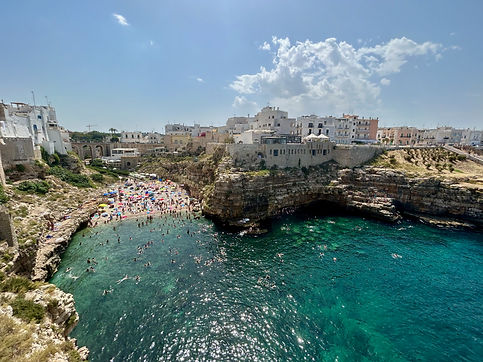
Polignano a Mare
Polignano a Mare dramatically commands attention with its whitewashed old town perched atop sheer limestone cliffs that plunge 20 meters into the crystal-clear Adriatic waters below. This photogenic coastal gem, founded by Greek settlers around the 4th century BC, features a compact and walkable historic center. The town's defining natural feature is Cala Porto, a small pebble beach nestled within a natural cove surrounded by soaring cliffs, creating one of Italy's most photographed and spectacular swimming locations. Beyond its striking beauty, Polignano offers numerous sea caves carved into the limestone foundations, including the magnificent Grotta Palazzese that houses a unique restaurant set within a natural cavern. The town seamlessly blends its rich history with contemporary charm, offering visitors panoramic sea views from numerous terraces, excellent seafood restaurants, and a vibrant atmosphere that captures the essence of coastal Puglia.
Polignano a Mare: Things To Do
Wander through Polignano a Mare's picturesque old town perched dramatically atop limestone cliffs, with narrow winding streets, charming piazzas, and poetry verses inscribed on stairways and walls that honor Domenico Modugno, the town's famous son who composed the iconic song "Volare." Experience the town's stunning coastline either by swimming in the crystal-clear waters of Cala Porto or by taking a boat tour that reveals hidden grottoes and secret coves only accessible from the sea. And whatever you do, make sure to stop and soak in the breathtaking viewpoints over the Adriatic Sea.

Explore the Centro Storico
Exploring Polignano's Centro Storico reveals a maze of narrow whitewashed streets, charming squares, and historic architectural gems like the Ponte Borbonico su Lama Monachile and the imposing Arco Marchesale. The historic center's ancient walls are adorned with thought-provoking poetry inscriptions and offer glimpses of daily Italian life unfolding against a backdrop of stunning sea views.

Visit the Best Scenic Overlooks and Belvederes
The panoramic viewpoints of Polignano a Mare, including Belvedere Terrazza Santo Stefano, Mirador Blue, Pietra Piatta, and Belvedere su Lama Monachile, offer breathtaking vistas of the dramatic limestone cliffs meeting the azure Adriatic Sea. These stunning overlooks provide perfect photo opportunities and peaceful moments to absorb the natural beauty of Puglia's coastline.

Cave Tour By Sea
A boat tour of Polignano's magnificent sea caves reveals hidden grottoes carved by millennia of waves, including the stunning Grotta Palazzese with its extraordinary emerald reflections. These excursions provide unique perspectives of the town's dramatic clifftop position while allowing visitors to discover secluded swimming spots accessible only by water. We loved our 1.5-hr tour that visited multiple caves and included a drink; click here to book.
Click here to purchase the Puglia Google map with the above recommendations included.
Polignano a Mare: Where To Eat and Drink
Polignano a Mare offers a vibrant culinary scene highlighting the best of Puglian cuisine, featuring delectable seafood caught fresh daily and local specialties like orecchiette pasta, burrata cheese, and crisp white wines. Family-run trattorias line the narrow streets of the historic center, while upscale establishments like the famous Grotta Palazzese, set dramatically inside a sea cave, provide unforgettable dining experiences with panoramic Adriatic views (however reviews state high prices are more for the experience and that the quality of the food is subpar). Beyond these visual feasts, the town's unpretentious eateries deliver authentic flavors that showcase the simplicity and excellence of regional ingredients, making Polignano a Mare a genuine gastronomic destination.
Click here to purchase the Puglia Google map with the above recommendations included.
Where To Stay
Puglia offers diverse accommodation options ranging from charming B&Bs in historic centers to luxury resorts along its pristine coastline. The region's signature accommodation is the masseria, a fortified farmhouse dating back to the 16th century, transformed into boutique hotels that combine rustic elegance with modern amenities amid ancient olive groves and countryside. These masserias provide an authentic Puglian experience (and I would highly recommend staying at least a few nights at one), with many featuring on-site restaurants serving farm-to-table cuisine, swimming pools set among fragrant gardens, and beautifully restored rooms that preserve original architectural elements like vaulted stone ceilings and traditional star-patterned pavements.
Click here to purchase the Puglia Google map with the above recommendations included.












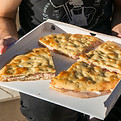









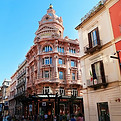


































_m.jpg)

